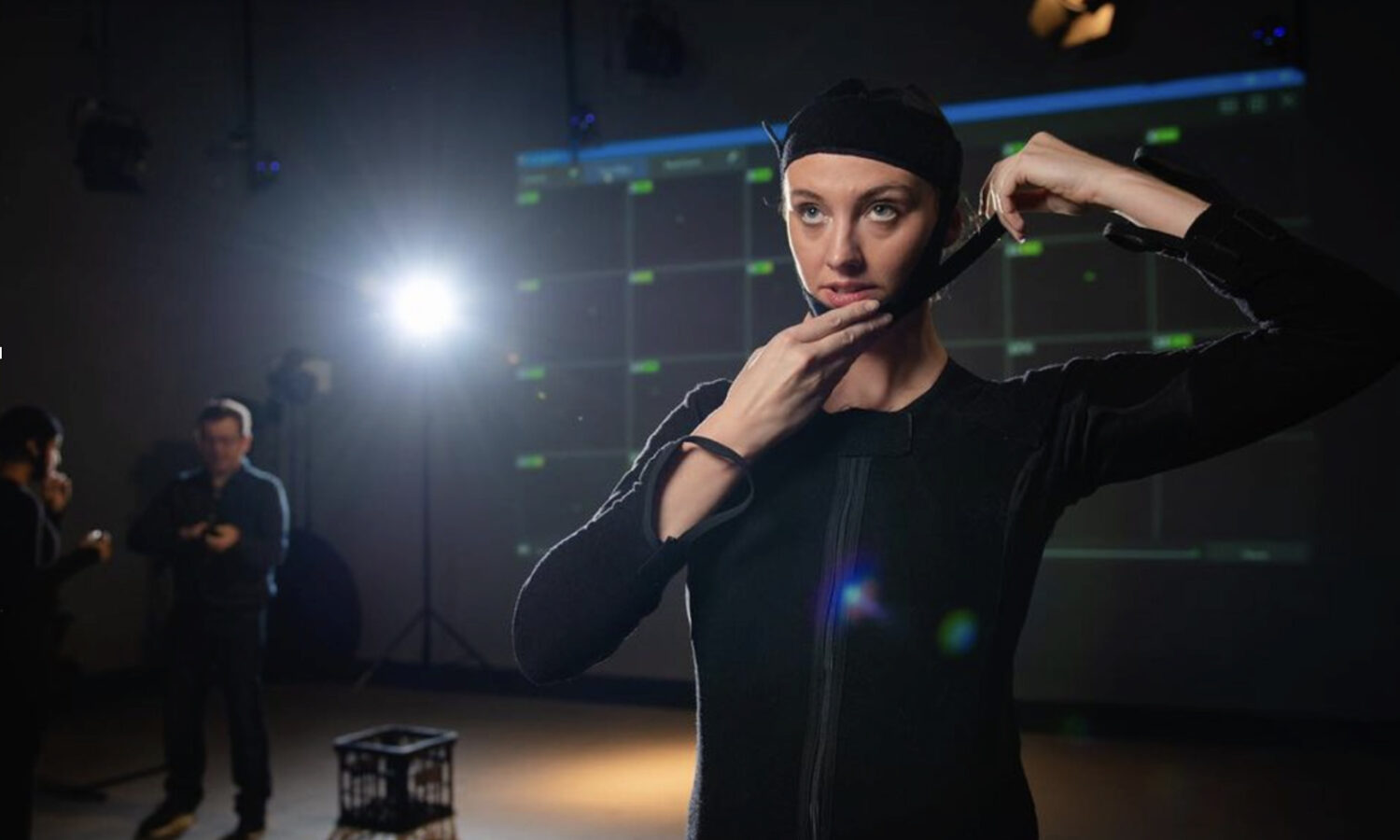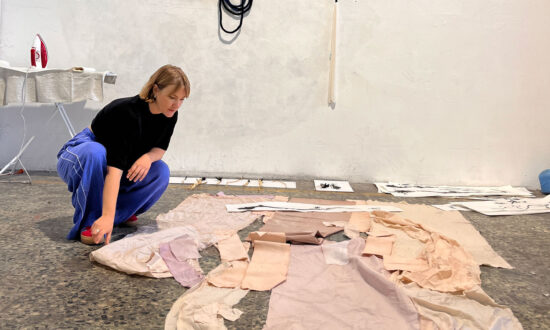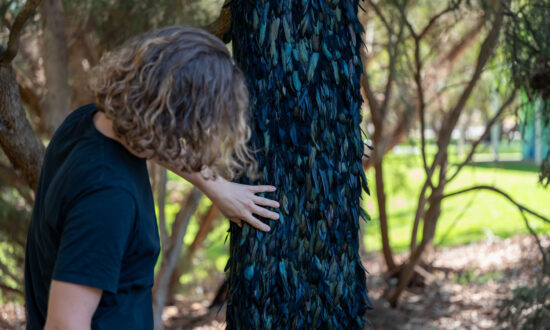The Neil Curnow Award is a once in a lifetime opportunity for emerging South Australian creatives to pursue career development in acting, theatre development, or directing. The opportunity encourages recipients to undertake projects that include an element of study with a recognised institution, to progress their career.
The Helpmann Academy with support from the Independent Arts Foundation are proud to offer one emerging local creative funding of up to $7,000 for interstate activities, or up to $10,000 for international activities.
The award is made possible through the generous bequest of the late Neil Curnow, an extraordinary man of the theatre, based in Adelaide. Following his impressive career as an actor, director, teacher and voice coach, Neil made a bequest through the Independent Arts Foundation to support emerging South Australian theatre professionals to pursue significant career development opportunities.
Flinders University graduate, Brittany Gallasch, was the recipient of the Neil Curnow Award in 2023. Henry Wolff, Helpmann Academy Engagement Coordinator, sat down with Brittany to discuss her experiences, and how emerging creatives can make the most of the opportunity:
What attracts you to developing skills around MoCap acting? And how have you combined this with movement or fight direction?
MoCap acting has always held a special fascination for me. I love being child-like and relying on my imagination and physicality to bring characters and environments to life. It feels like a digital form of pupeteering. I’m also inspired by the diverse array of characters you can play in MoCap acting, from humans to animals, or even strange fantasy creatures. As the world becomes more technologically advanced, I’m excited to see the possibilities that lie ahead for MoCap in this evolving space.
After learning more about the demands of the international MoCap industry, I found myself naturally gravitating towards dramatic combat/fight and physical theatre skills. These skills complement each other as they are fundamentally centred on the ability to tell a story and evoke emotions through movement, gestures, and expression.
Tell me more about working with Stephanie Osztrichter at Fourth Monkey, and what you experienced as part of her movement and devising-based classes.
Working with Stephanie at Fourth Monkey was incredible, not only is she a fantastic movement teacher and director, she’s also an amazing human being who made me feel super welcome at the school. Through watching her work with the students on different projects, I learnt a lot about the role of Movement Director and how movement direction can enhance performances for traditional theatre, devising and MoCap. I participated in a many different movement and devising classes under Stephanie’s guidance, where I learnt about crafting performances for unconventional settings, gained skills in developing group choreography, delved into the world of interactive theatre, explored the intricacies of mask techniques and principles of the Lecoq methodology.
What truly resonated with me was Steph’s lesson on ‘translation,’ which involves the art of observing movement in everyday life – from the graceful swaying of trees in the breeze, to the agility of squirrels, to the subtle dynamics of people in public spaces – and harnessing this inspiration to create innovative physical theatre choreography. A highlight was observing the students embark on their unique group devising projects, with each team embracing a distinct approach. Some chose to begin with music, while others explored themes, poetry, psychology theories, or striking visual images. This opened my eyes to the limitless ways to devise new work and gave me plenty of new devising tools!
You explored methodologies like Lecoq and mask techniques with Stephanie – can you share a little more about these techniques?
Exploring new movement methodologies such as Lecoq and Mask with Stephanie was an incredibly exciting. These techniques are designed to enhance an actor’s physicality and expressiveness while simultaneously honing their physical precision. I explored different emotional states using ‘Larval Masks’ which are oversized, geometric Masks that amplify an actor’s movement, forcing them to make clear, precise, and efficient physical choices. It was hard to see when wearing the Larval masks, so I had to rely on senses such as sound, kinaesthetic awareness, and audience awareness to navigate my performance. This process taught me the importance of having good body awareness, and the power of subtlety and exaggeration in performance.
Stephanie, who trained at the Jacques Lecoq school in France, integrated this methodology into her warm-ups and movement classes. Jacques Lecoq aimed to revolutionise text-based theatre, envisioning a future-focused, body-centred, and universally accessible form of theatre. I was drawn to Lecoq’s “20 movements”, which are a set of foundational physical movements developed specifically for actors to enhance their balance, coordination, rhythm, and control. Through these classes I felt more playful and connected to my body, helping me to convey emotions and character traits through movement alone.

Brittany Gallasch shooting and producing first MoCap film, 2023. Photograph supplied
There are many ways performers approach and employ movement. What do you see is the role of movement within your practice? And how does this connect with an audience?
Movement is at the heart of my artistic practice as a performer no matter what the medium is- be it film, theatre or MoCap. Audiences are smart, so they will automatically read an actor’s body language, so physicality, breath, and movement is crucial to create believable characters. There’s nothing worse than seeing an actor being a “talking head” on stage. Similarly, in MoCap, every gesture and nuance of movement is captured and translated onto a digital character, so it’s important to be conscious of one’s body language and physical habits. Physical theatre has even less reliance on words and facial expressions, so the body becomes the primary tool for storytelling and conveying meaning to the audience.
I understand you undertook MoCap training at The MoCap Vault – what was this experience like?
Training with the MoCap Vaults was amazing! I was really excited especially because my MoCap mentor, Paul William Mawhinney, trained with them and built a successful MoCap career through their guidance. There were about fifteen of us, and everyone was genuinely open and enthusiastic about MoCap. The course took us through an in-depth exploration of character creation, enhancing my toolkit of imagination, observation, body awareness and the specific performance skills needed for MoCap shoots.
The MoCap Vault is the world’s leading MoCap performance capture school. I imagine you would have been there with people from all over the world – did you develop any unexpected connections or professional relationships?
Yes, this course was certainly a hub for meeting many other performers with similar ambitions and passions to me. The course attracted many different performers- some actors like me, others dancers, improvisers, stunt performer or educators. Through social media, I’ve been able to stay connected with my fellow MoCap enthusiasts, and it’s been awesome to keep up with their journeys to stay inspired.
I was fortunate to establish professional connections with John Dower and Gareth Taylor from The MoCap Vaults. Gareth is a brilliant movement director, physical theatre deviser and MoCap actor, who led the course I participated in. I learnt about his journey towards becoming a sought-after movement director in London and about the diverse range of projects he’s gets involved in as both a performer and movement director. I also had the privilege of having a one-on-one meeting with John Dower, the founder of the MoCap vaults. John offered me valuable insights into the intricacies of the industry, the specific skills I should be building as a performer and gave me a broader understanding of where MoCap and Performance capture was heading in the future.
Intensives can be extremely valuable learning environments, but by their nature they are “intense” – what was it like undertaking the ‘Fight the Good Fight’ Stage Combat Intensive with Captivate Action at Dancehouse Melbourne?
Yes, the course was VERY “intense”, but also wonderful. After day two, I distinctly remember feeling sore all over, but I was having too much fun to let it stop me. Lyndall Grant, one of Australia’s leading fight directors, led the course. Under her guidance, we delved into various weapon styles, including unarmed combat, knives, rapiers, long swords, how to fall and much more. A lot of the combat weapons were new to me, so I found some more challenging than others. However it was empowering to deepen my practical understanding and technical proficiency across a wide spectrum of weapons, enhancing my versatility as a performer. Being an intensive, I found my ability to pick up fight choreography got quicker as the week went, and I developed a new appreciation for the skills that go into creating convincing fight scenes for the stage or screen.
I believe that this intensive involved learning how to use weapons and unarmed combat onstage. This sounds like a lot of fun, but how are these actions navigated safely while maintaining believability for an audience?
It’s such a delicate skill to be able to maintain believability whilst also keeping the performers and audience safe. When tackling a new weapon, we began with individual basic drills, maintaining distance from each other. Next, we paired up to rehearse choreography at a slow pace, gradually building up to full speed until it became second nature. Each move was choreographed in detail, much like a dance routine. When performing, non-verbal communication such as maintaining eye-contact and giving subtle non-verbal cues also help coordinate actions smoothly and safety. Then it all comes down to the acting! I learnt how to suspend an audience’s disbelief through positioning, timing and incorporating vocal and facial expressions.

Brittany Gallasch 2023. Photograph supplied.
How important was the support of the Neil Curnow Award, Helpmann Academy and the Independent Arts Foundation in making these professional development experiences possible?
The support of the Neil Curnow Award, Helpmann Academy, and the Independent Arts Foundation was vital in shaping my artistic path and helping me grow to the next level as an artist. The experiences I’ve had have been nothing short of mind-blowing. With their support, I’ve had the opportunity to witness the thriving MoCap industry in London and connect with some of the world’s best professionals, helping me see and carve a path forward. This experience also helped me to grow my community of practice and meet so many like-minded performers. Having the chance to travel to another county where I got to witnessing incredible shows, explore museums and galleries, and observe cutting edge technology was truly inspiring. I am so grateful for their support, and I’m excited to use the skills and tools to enrich the MoCap industry in Adelaide.
You got up to a lot of amazing things as part of your Neil Curnow Award activities – how are these experiences influencing your work? (Feel free to share any upcoming works here)
Since returning to Adelaide, I’ve been eager to apply the knowledge and skills I’ve gained by creating a MoCap showreel and doing various performance MoCap experiments at ‘the Void’, an optical MoCap studio at Flinders University. My aim is to keep making MoCap content that pushes boundaries in Australia. Looking ahead to next year, I’ll be undertaking an internship with Patch theatre to develop a new children’s show that incorporates physical theatre and inertial MoCap technology.
Do you have any advice for people considering applying for the current round of the Neil Curnow Award?
Get onto it! I gave myself plenty of time to brainstorm, dream and reach out companies I’d love to work with. Meet with the staff at Helpmann, they are a valuable resource to help you refine and focus your plan, especially if you’re someone like me with a million different ideas. And most importantly, be bold, follow what excites you, even if it’s unconventional, niche and different from the mainstream.
Applications for the Neil Curnow Award are currently open and close on 5 November, 2023 at 11:59pm. Application can be made online here. The Neil Curnow Award is proudly supported by the Independent Arts Foundation.
Henry Wolff is a visual artist and arts worker living and working on Kaurna Country.
The story is sponsored by the Helpmann Academy.
Support local arts journalism
Your support will help us continue the important work of InReview in publishing free professional journalism that celebrates, interrogates and amplifies arts and culture in South Australia.
Donate Here




